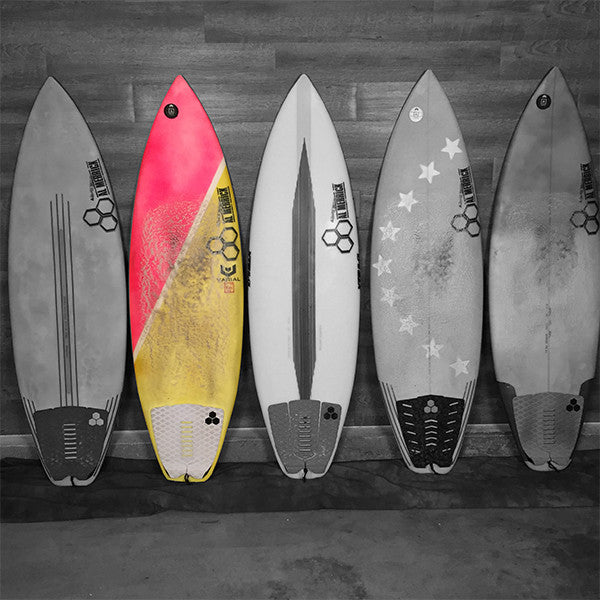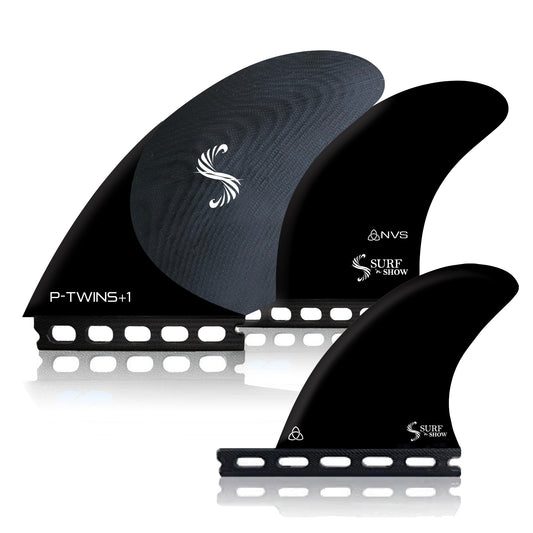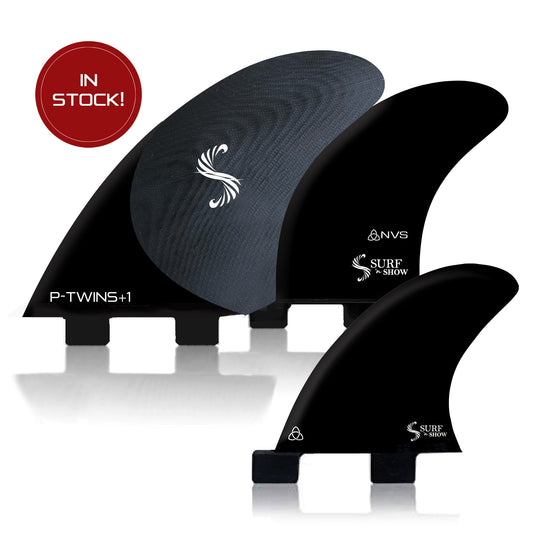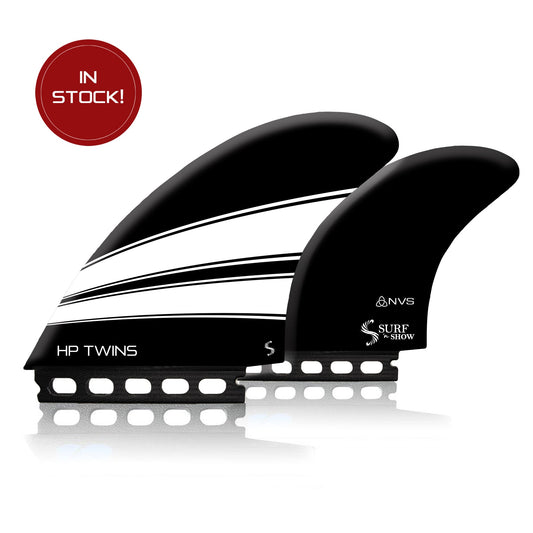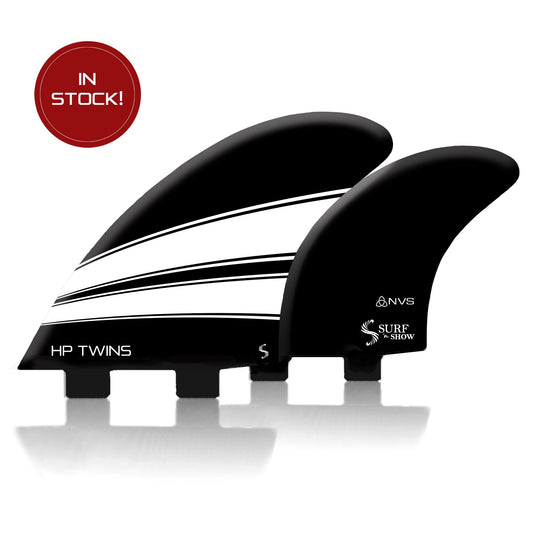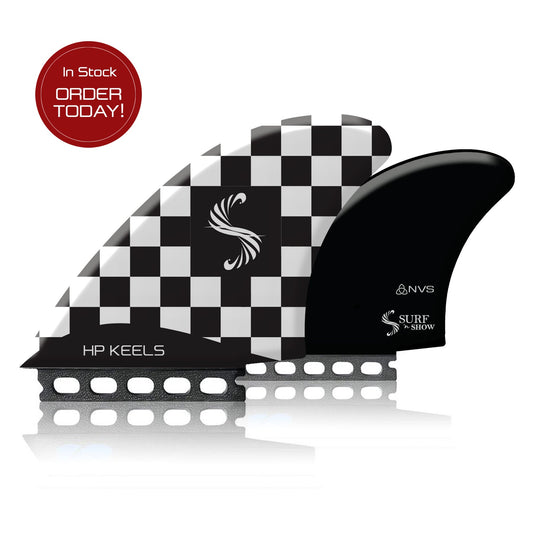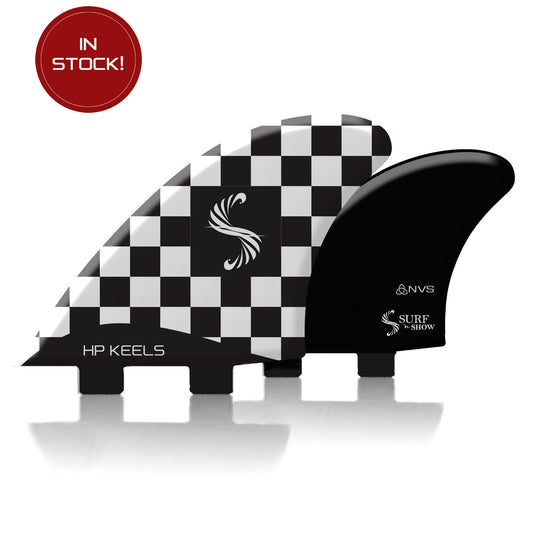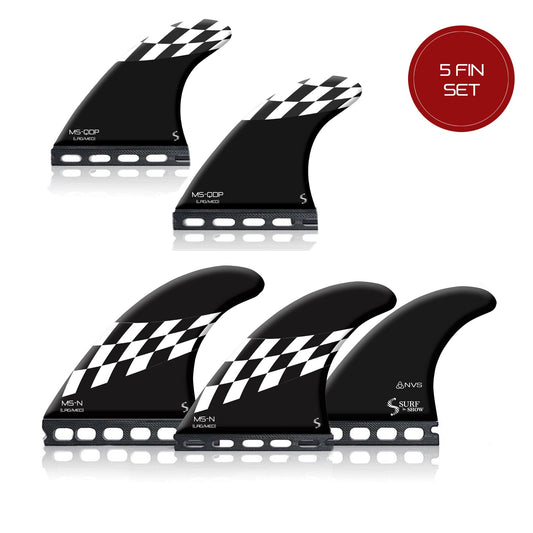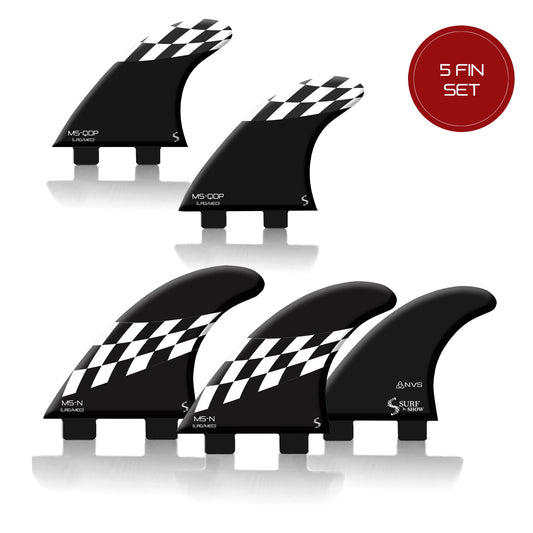Noel's fin recommendations for this board
Channel Islands
Channel Islands - Varial Foam / Epoxy Resin
SCALE 1-5 - Rating lowest (1) to highest (5)
| FLEX & FEEL |
 |
BUOYANCE
|
 |
| DURABILITY |  |
LOW CHATTER/VIBRATION |
 |
| WEIGHT |
 |
ECO-FRIENDLY
|
|
| INNOVATION |
 |
PRICE POINT/VALUE
|
 |
No obligation, but these links & ads help support the site and keeps the reviews coming! If you decide to buy somewhere else or would like to support the show, please donate at https://www.paypal.me/surfnshow
This video is about Channel Islands' "Varial Foam vs. Polyurethane (PU)" Surfboard review by Noel Salas. Noel orders his favorite small wave board 'the Sampler' by Channel Islands in two different foam constructions. Both boards are the same, exact dimensions (5'7 x 19 x 2 5/16 volume 26.7) and glassed with polyester resin. Both boards have Team Light glassing with 4oz S cloth on the deck and 4oz E cloth on the bottom.
The crew from SS&T (Surf Show and Tell) head to Ventura, CA to meet the two founders of Varial Foam, Parker Borneman and Edison Conner.
As this review unfolds, you will hear the story of Varial foam and what makes it so unique. The cost of a Varial foam board is roughly $200.00 more than a Polyurethane foam board.
The claims made by the folks at Varial foam are listed below compared to the conventional Polyurethane foam:
1. Faster
2. Lighter (25% compared to a PU foam)
3. Stronger (30% compared to PU & EPS foam)
4. Foam will never YELLOW (Glass could yellow)
5. Will not Delaminate
6. Closed Cell Foam
7. Longer-Lasting Boards & Eternal Flex (compared to PU & EPS)
Noel goes in to detail using Trace Up GPS to verify some of these claims. We compared the Varial and PU boards in the following ways and the results are listed below:
1. Max Speed on a wave (PU was faster)
2. Average Speed on a wave (PU was faster by 5%)
3. Cutback rotation speed (Varial was faster by 8%)
4. Cutback Power (Varial was greater by 16%)
5. Cutback Turn Angle (Varial was greater by 8%)
6. Cutback Roll Angle (PU was greater by 5%)
7. Bottom turn roll angle (Varial was greater by 14%)
8. Bottom Turn duration (Varial was greater by 4%)
9. Bottom Turn Speed Gain (Both Equal)
10. Degree of vertical after bottom turn (PU more vertical by 1%)
11. Weight: Varial 4.85 & PU 5.07 (Difference roughly 4.5%)
All data was complied from 3 days of shooting video at Lower Trestles. After each session the data was sent to Trace for analysis with in-depth detail consisting of 13 pages of data for each day.
Just to clarify the weight of both boards. The Varial foam board weighed in it at 4.85 and the PU came in at 5.07. The Varial board came in roughly 4.5% lighter. Sorry for any confusion.....
Have a look at the full review and decide for yourself which board looks best as Noel tests them both in different wave conditions.
For more information on Varial Foam go to www.varialsurf.com
This is the technology from the Varial Foam website:
Varial Foam is the world’s first high performance foam adapted from advanced aerospace materials for surfboard construction. It is a new foam chemistry, which focuses on improving the performance of the surfboard core. The high modulus of Varial Foam makes it 25% lighter and 30% stronger than a PU blank with a stringer. It provides a strong and lively foundation on which shapers can incorporate any flex option they desire. Our extremely tight cell structure and uniform density enhance the board building process, eliminating variables which negatively affect a board’s performance. Varial Foam is 100% UV resistant and is always stringerless.
